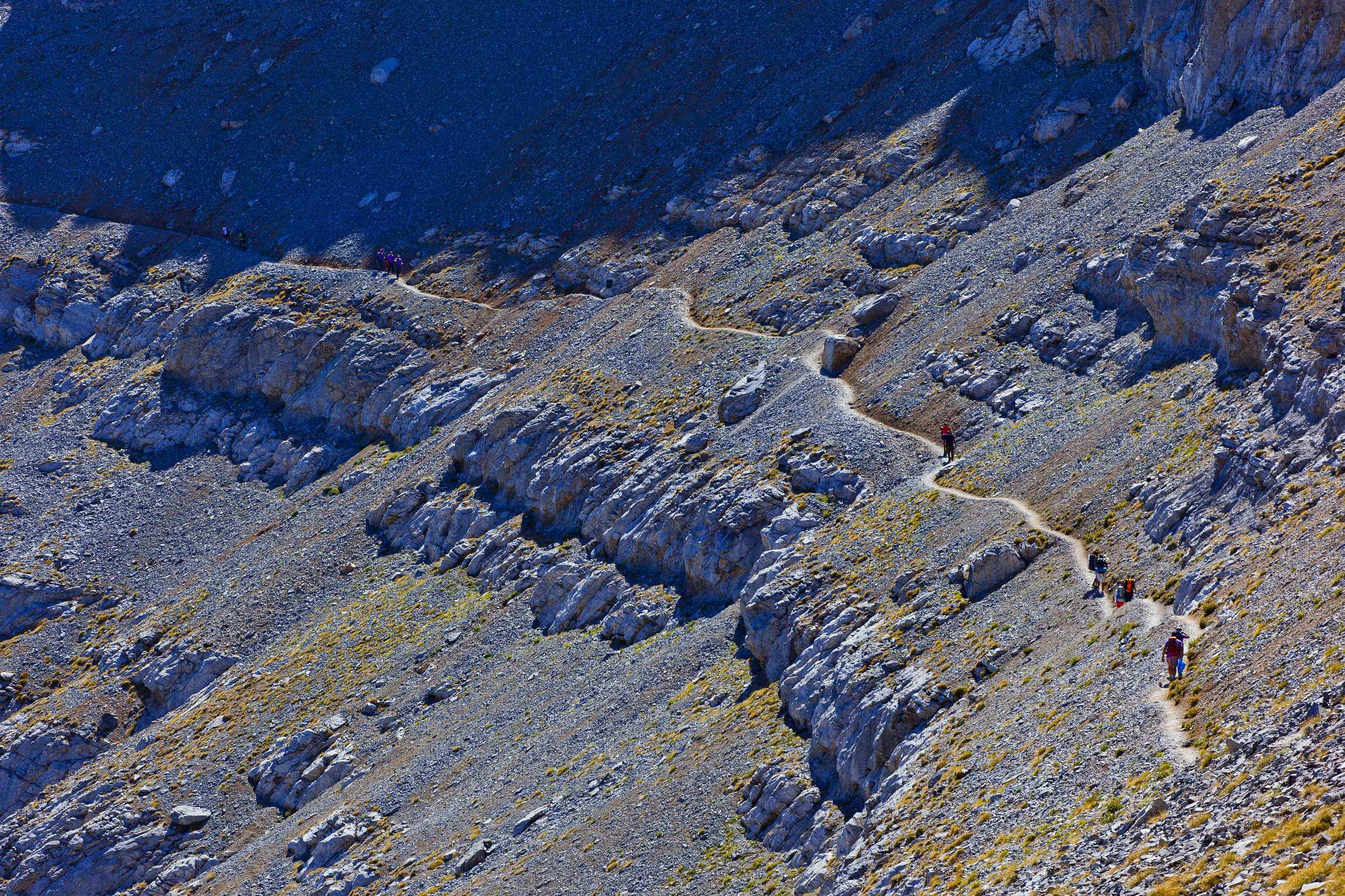MOUNT OLYMPUS
Home » THE MOUNTAIN » On the geology of Mount Olympus
“…First there was Chaos
then there was Earth, the safe eternal seat of all
the immortals living on the peaks of Olympus…”
These lines of Hesiodus “Thegony” reveal the poet’s effort to interpret the creation of the world through an erotic affair between Earth and Eros.
Then Earth gave birth to starry Sky, similar in size, eager to shed and eternally protect this safe residence of the gods.
Then Earth gave birth to the long Mountains, fastness of joy for the Nymphs, graceful dwellers of the gorges.
In their mythological Cosmogony, the Ancients tried to interpret the creation of the highest mountain of Greece through the appeal of the ancient civilisation, which had the legendary Olympus in the centre of its mythology, art and literature.
According to geologists, who attempted to explain the geological genesis of Olympus, humanity’s holy mountain was created 180 million years ago. A gigantic movement in the earth’s womb created the big zone of land in central and northern Greece having Olympus as its highest peak.
Transformations of its rocks and tectonic turmoil during its gigantic geological age, glaciers and erosions of its calcareous volume due to their melting created the contemporary shape of the beautiful mountain with the raw high peaks, the steep slopes and the impressive gulfs.
The glorious, the “egliis” Olympus, vertically crosses the Greek mainland at the boundaries of Thessaly and Macedonia, forming an almost unified mountainous row with the short ridges of lower Olympus on the south-east and with Titaros on the north-west, a conic peak between Olympus and Pieria mountains.
The ‘multi-facet’ Olympus has all the mountainous characteristics, the mythological mother-Earth having abundantly provided it with all of them. Steep as well as flat high peaks (Mytikas 2.918 metres, Skolio 2.912 metres, Stefani 2.910 metres) a chaotic precipice of 700 metres depth with old layers of glass at its base, the Big Caldrons, two big gorges, of Enipeas-Mavrologgos, on the east, and of Sparmos, on the south side, alpine highlands where flocks graze.
Very impressive are also the caves and gulfs of Olympus. The most important and famous ones are the cave of Morias, close to Karya village, with four cabins and nice stalagmites, the cave of Ithakisios, a rocky shelter near the monastery of Agios Dionysios, where the artist Vassilis Ithakisios used to stay before the war during the summers in order to paint, the cave of Agios Dionysios, place of asceticism of the Saint and many caves and gulfs, filled with frozen snow.
Peaks (46 are the highest ones), gullies, slopes, forests, clearings, grasslands, have been adequately mapped by many geographers, providing exquisite maps with information on altitude, among which the best ones are those of Marcel Kurtz and of the Military Geographical Service.
Based on the measures done at the Scientific Centre of Olympus, a meteorological station founded by the university of Thessaloniki on the peak of Agios Antonios (2.818 metres), the climate of Olympus is characterised by unpredictable weather changes.
Spring comes in June and winter begins in October, in the alpine zone of Olympus. The average temperature fluctuates from 0oC to 20oC degrees during the summer and from –20oC to +10oC during the winter with variations according to place and altitude. Its peaks are covered with snow for over a semester and even from August to September it snows twice or three times. Glaciers remain in gulches and in gullies of the highlands all the year long spreading among the high peaks, where the shepherds used to water their flocks with the melted ice during the summer.
The storms and hurricanes, which the ancients attributed to raged Zeus, violently break out throughout the year, which is undeniably proved by the broken pine-trees, found on the slopes just before the mountain’s alpine zone.
